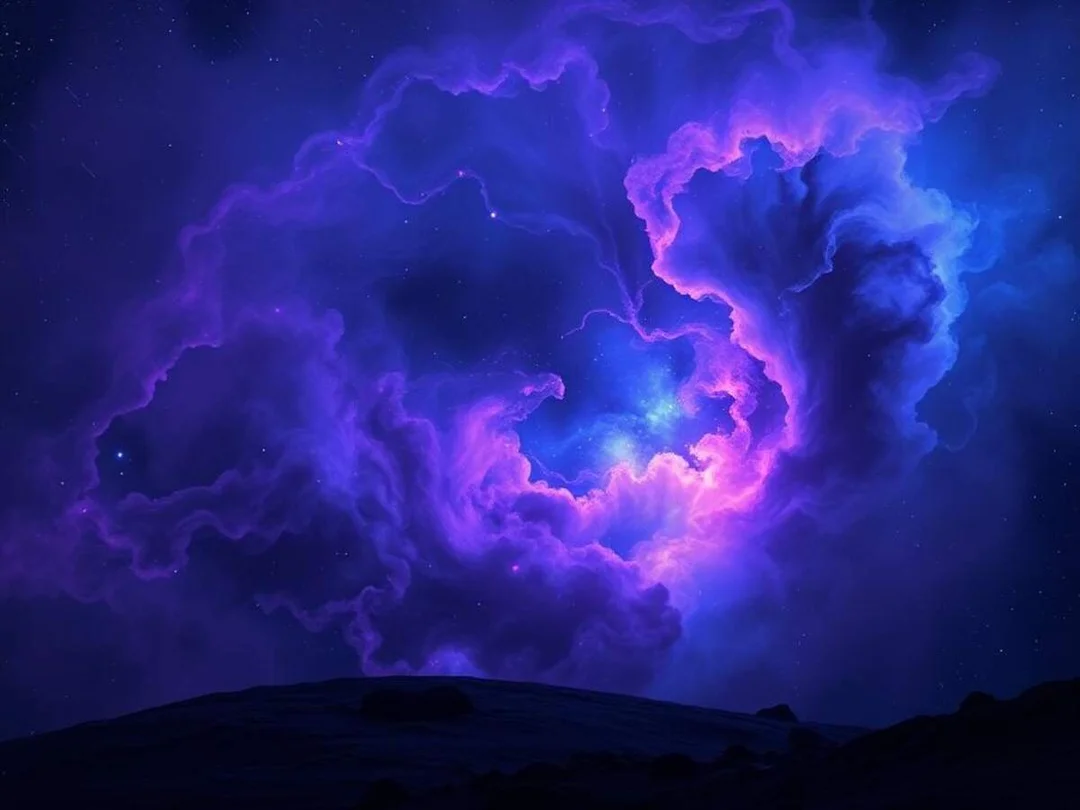
Giant ‘Eos’ Cloud Discovered Near Earth: A Cosmic Time Capsule on the Brink
Astronomers have made a stunning discovery in our cosmic backyard: a massive molecular cloud dubbed Eos, weighing 3,400 times the mass of the Sun. This hidden giant, lurking just 300 light-years from Earth, has remained undetected for centuries, posing intriguing questions about the universe's hidden wonders. Its discovery is significant since it allows previously unknown knowledge of planet and star creation to be revealed. Yet, its existence is threatened by the strong radiation of nearby stars.

Eos, named after the Greek goddess of dawn, is a crescent-shaped cloud primarily composed of molecular hydrogen. Stretching approximately 100 light-years across, it would appear as 40 full moons lined up if visible to the naked eye. What makes this discovery particularly exciting is the innovative method used to detect it. Unlike typical molecular clouds, Eos has a low carbon monoxide (CO) content, rendering it virtually invisible to traditional telescopes.
The team, led by Blakesley Burkhart from Rutgers University, utilized data from the Korean satellite STSAT-1, equipped with the Far-ultraviolet Imaging Spectrograph for Spectroscopic and Photometric Exploration of All Sky (FIMS-SPEAR). This instrument allowed them to detect the faint ultraviolet emissions from molecular hydrogen, revealing Eos's hidden presence. "This cloud is literally glowing in the dark," said Burkhart.
Located at the edge of the Local Bubble, a vast, empty region of space near our solar system, Eos offers a unique opportunity to study the building blocks of stars and planets. Molecular clouds like Eos are stellar nurseries, containing the raw materials for cosmic creation. However, the cloud's future is uncertain. The intense radiation from nearby stars is slowly evaporating its molecular hydrogen, threatening its existence. Scientists estimate that Eos will dissipate in approximately 5.7 million years.

The discovery of Eos has sparked new questions. How does its interaction with the North Polar Spur, a vast region of ionized gas, shape its structure? What potential does it have for star formation before it disappears? To answer these questions, Burkhart and her team are planning a mission for a NASA spacecraft named after the cloud, aiming to measure molecular hydrogen content across the Milky Way.
Eos's matter dates back 13.6 billion years ago and the Big Bang. This raises essential concerns about how scientists thought they knew the universe until the moment of its discovery.
The discovery of Eos serves as a potent reminder of the vastness and complexity of the universe. It underlines the importance of developing ingenious methods for the exploration of space. What other secrets lie hidden in plain sight, ready to reshape our understanding about the cosmos?
Share your thoughts and theories in the comments below!